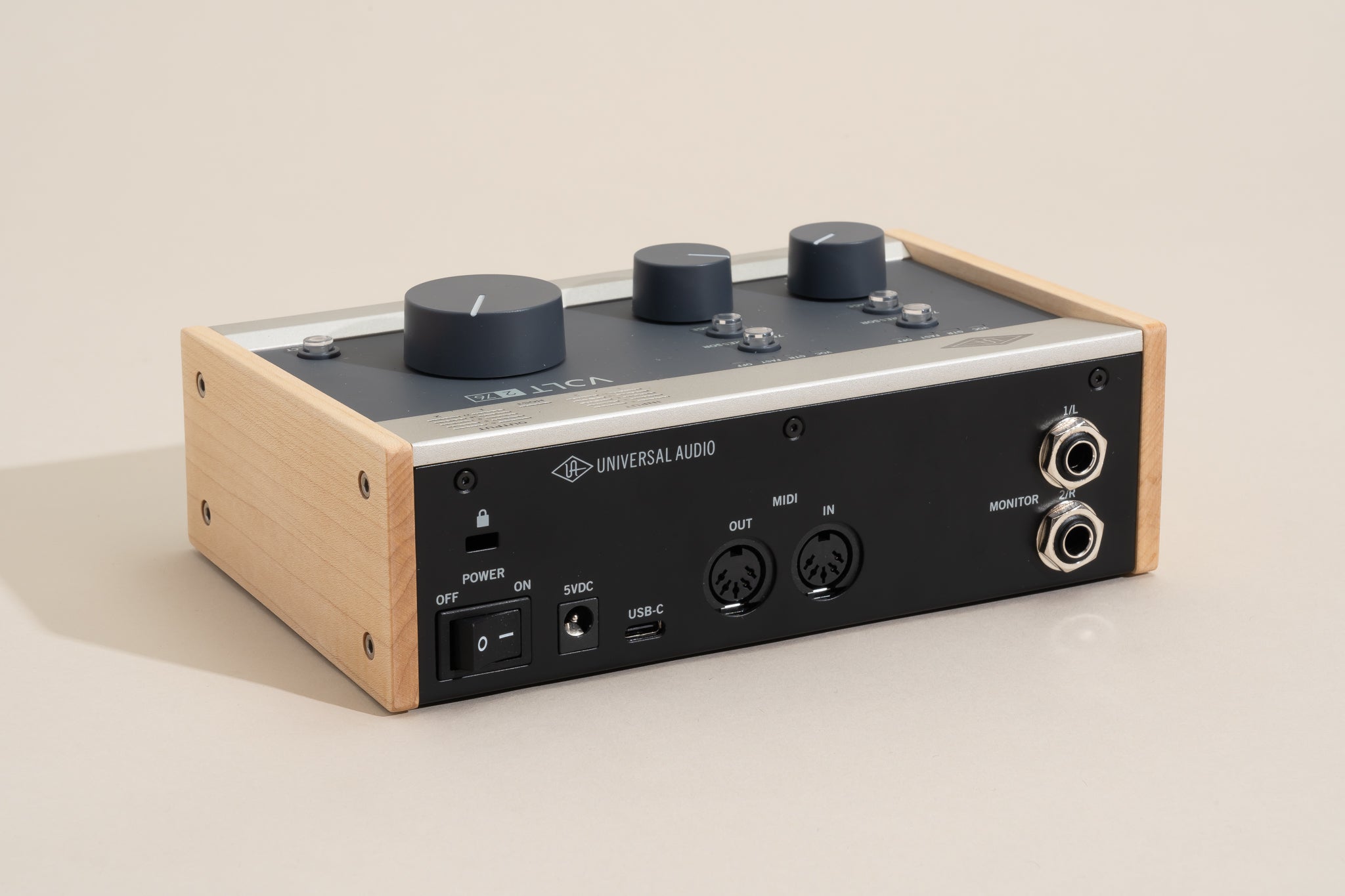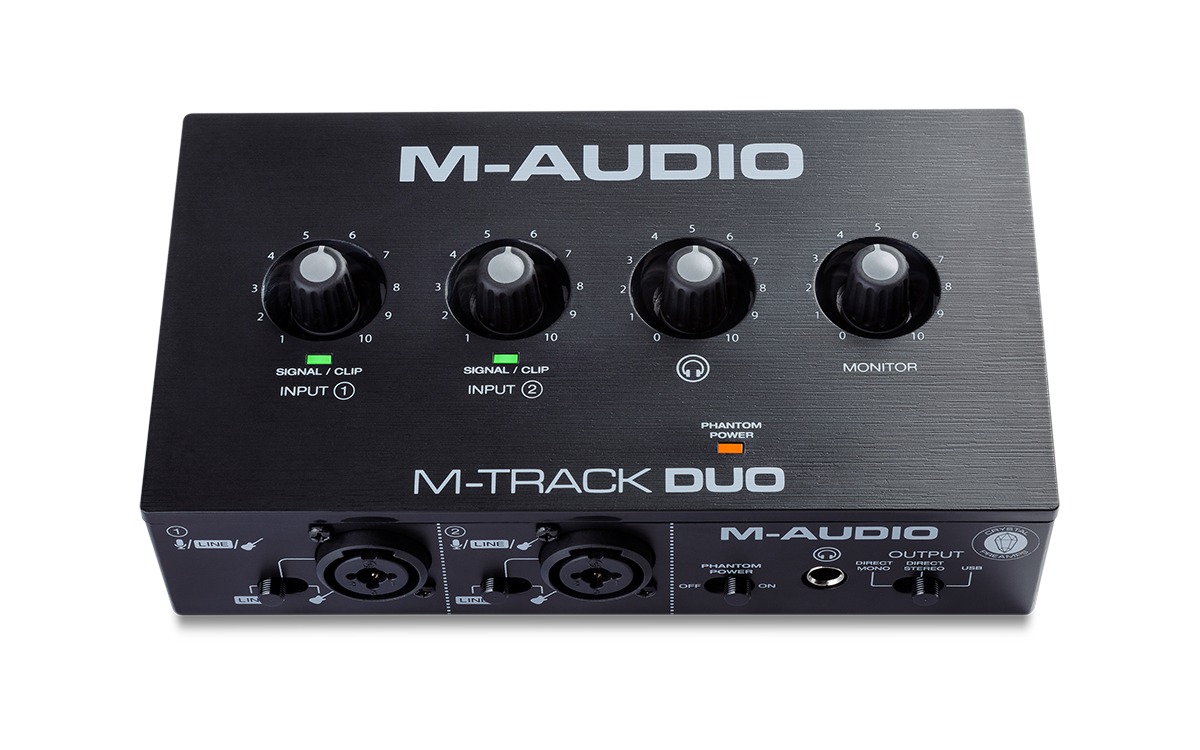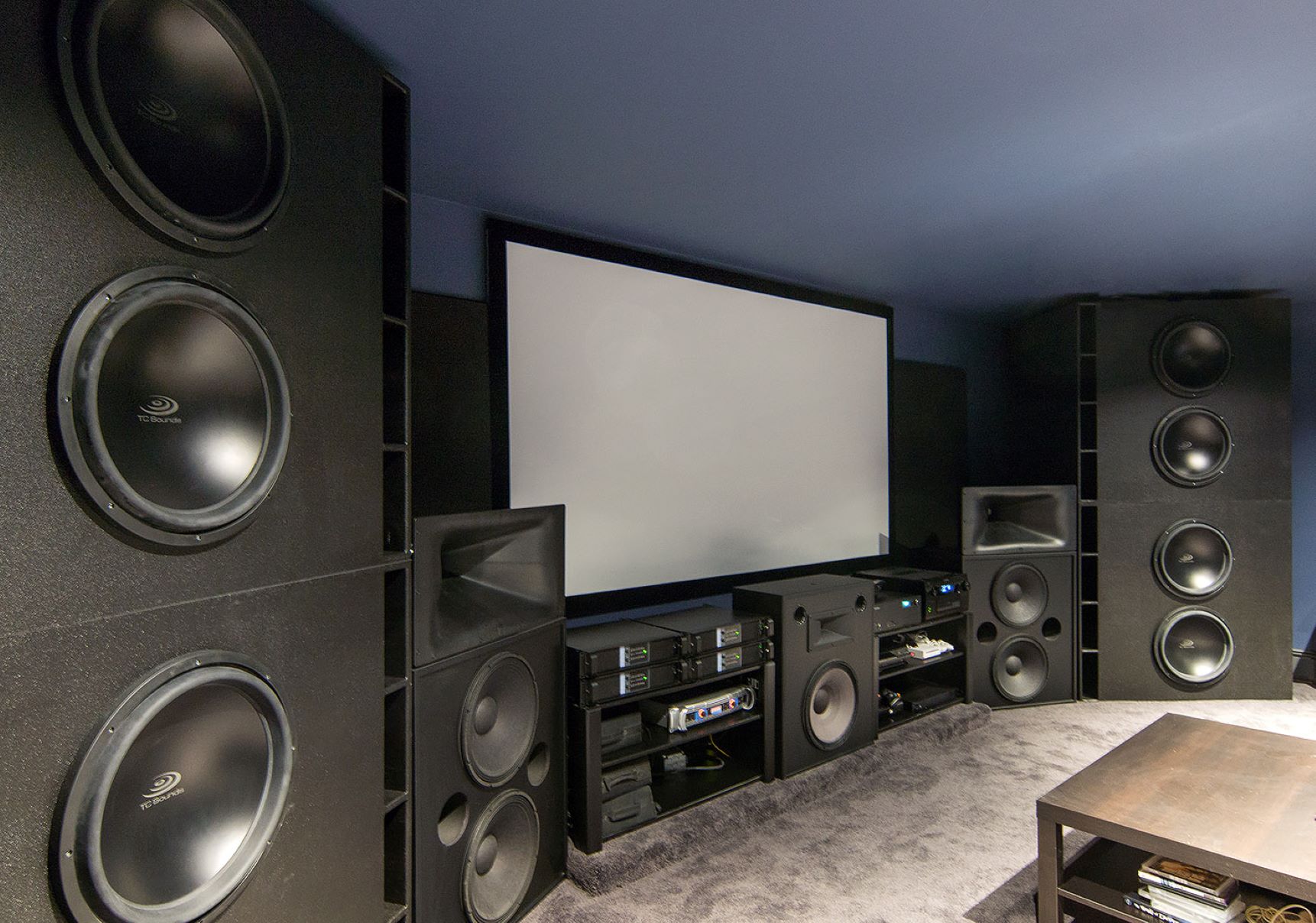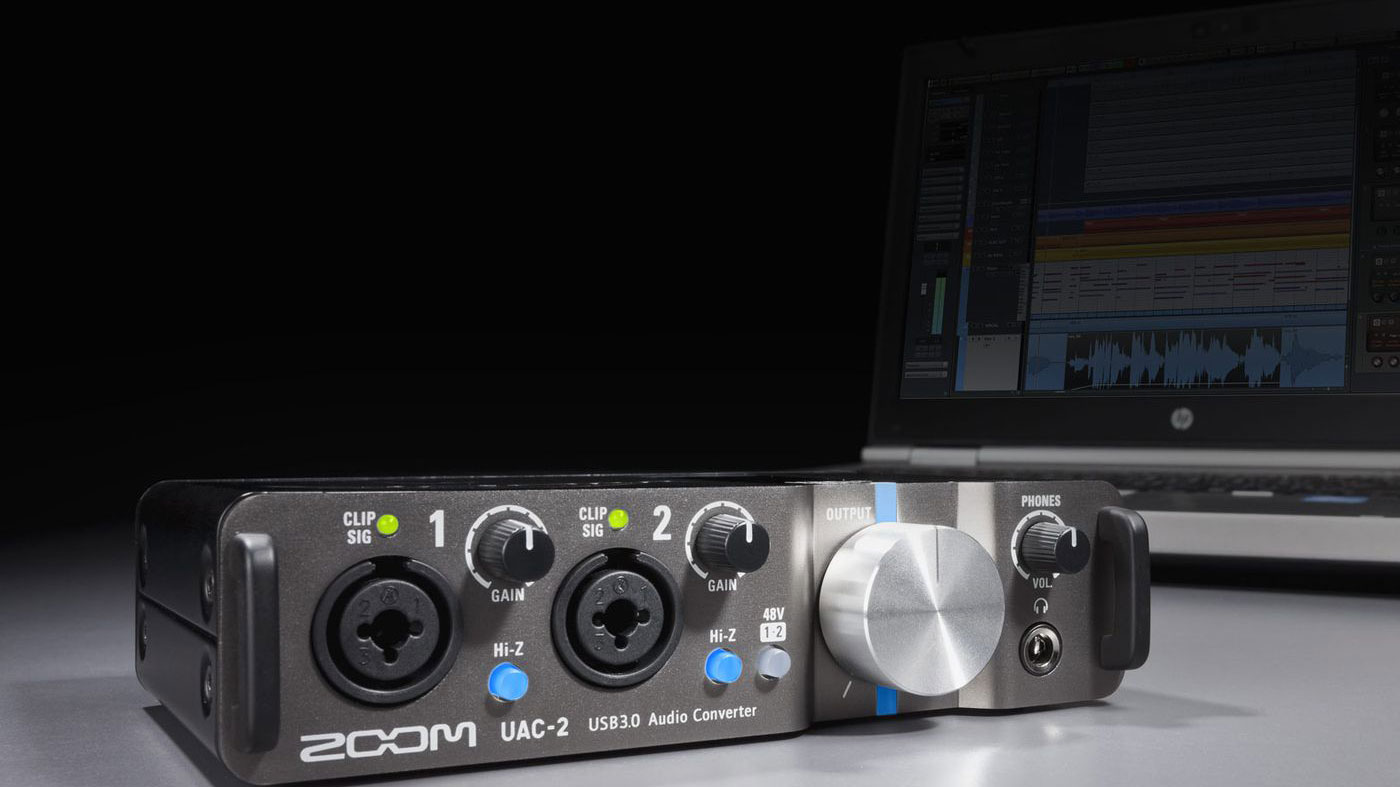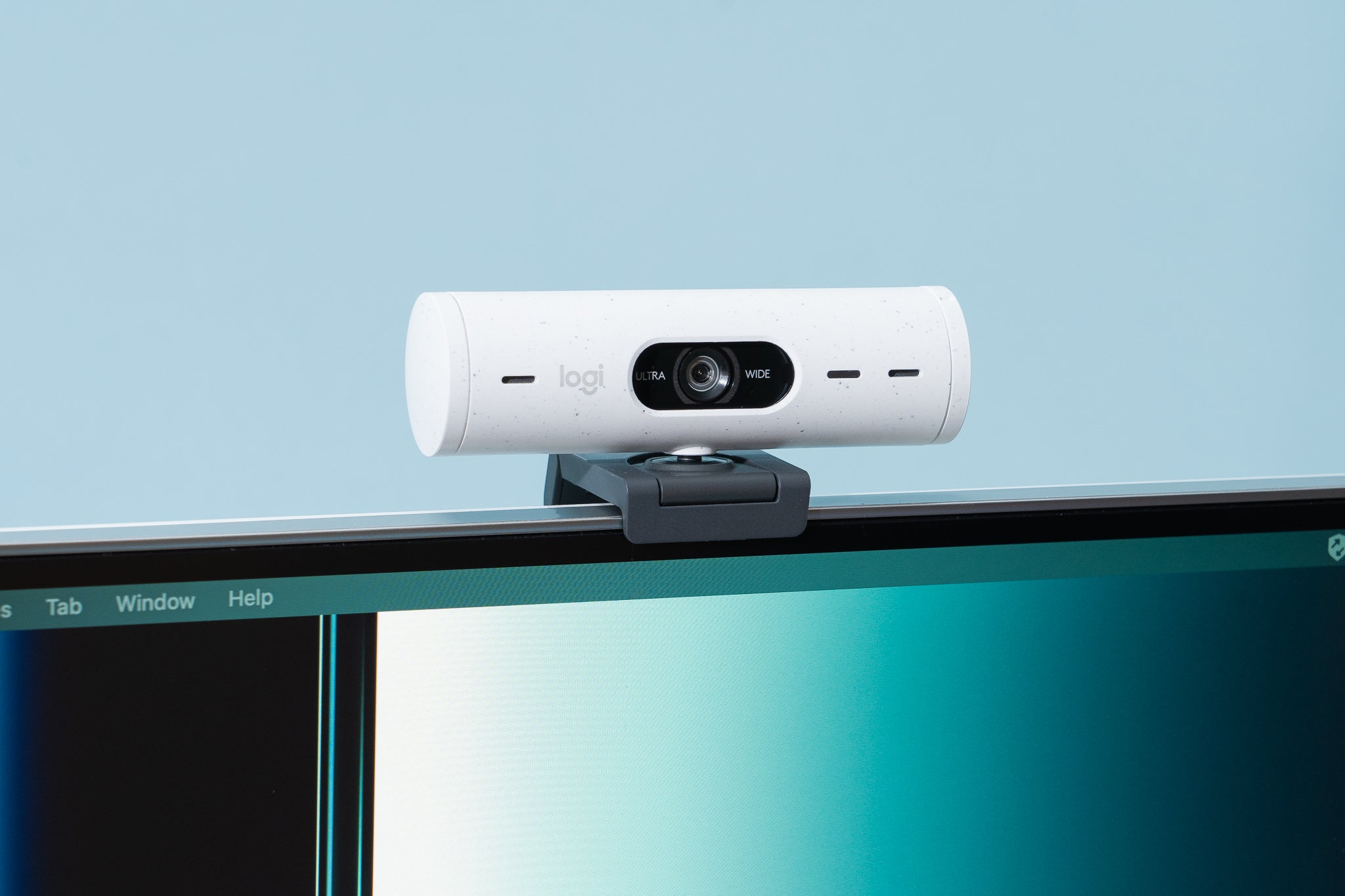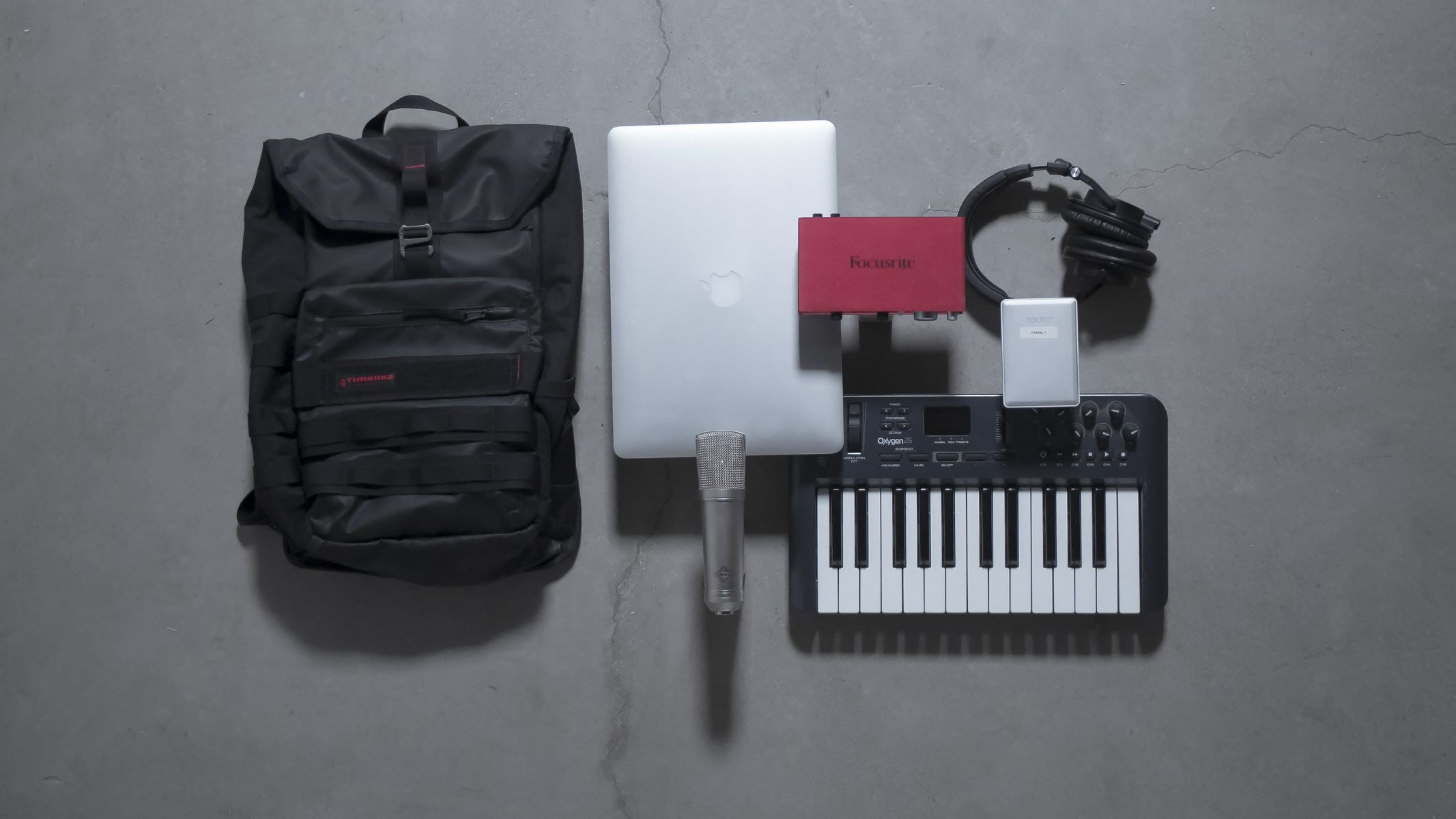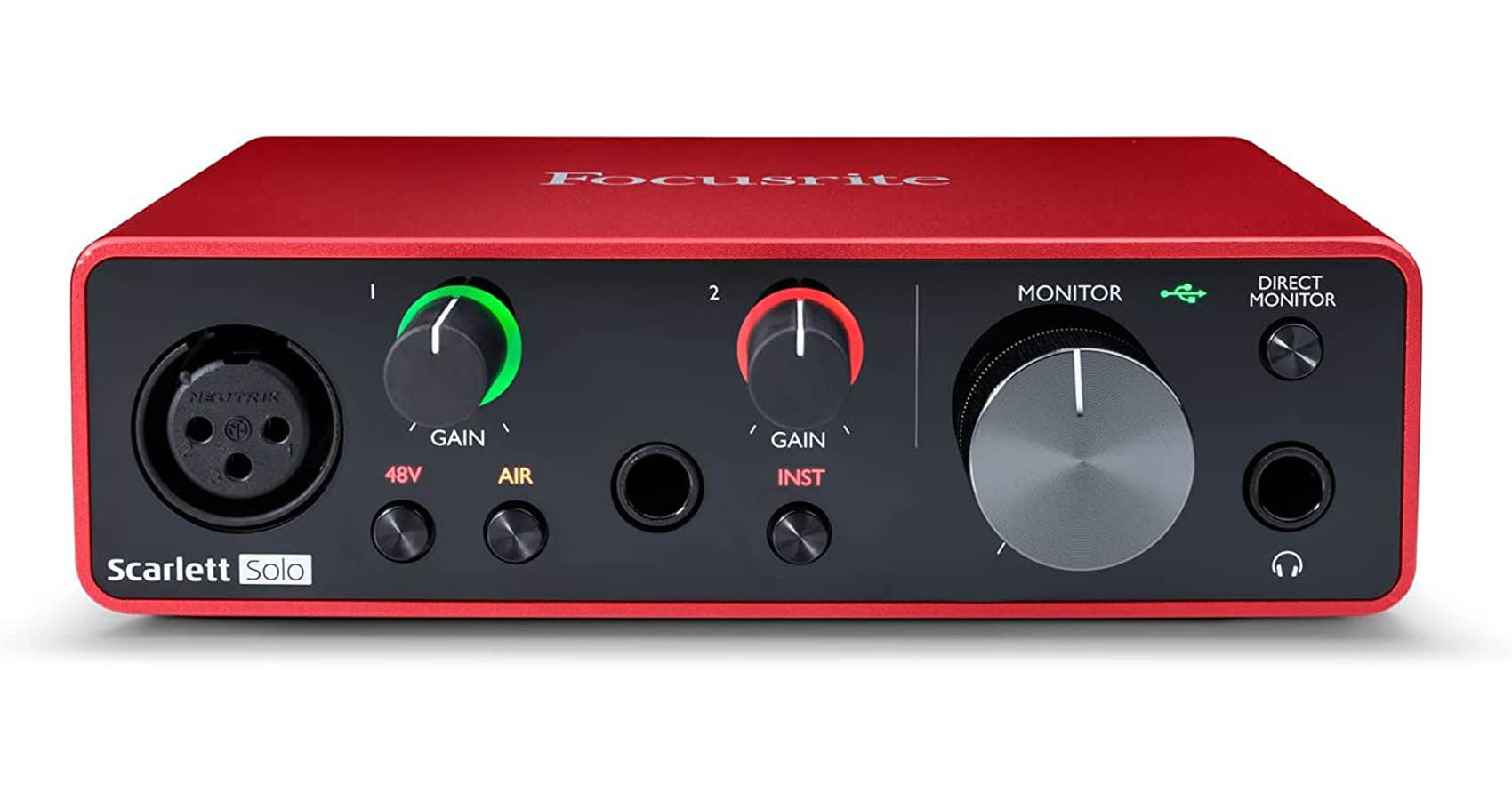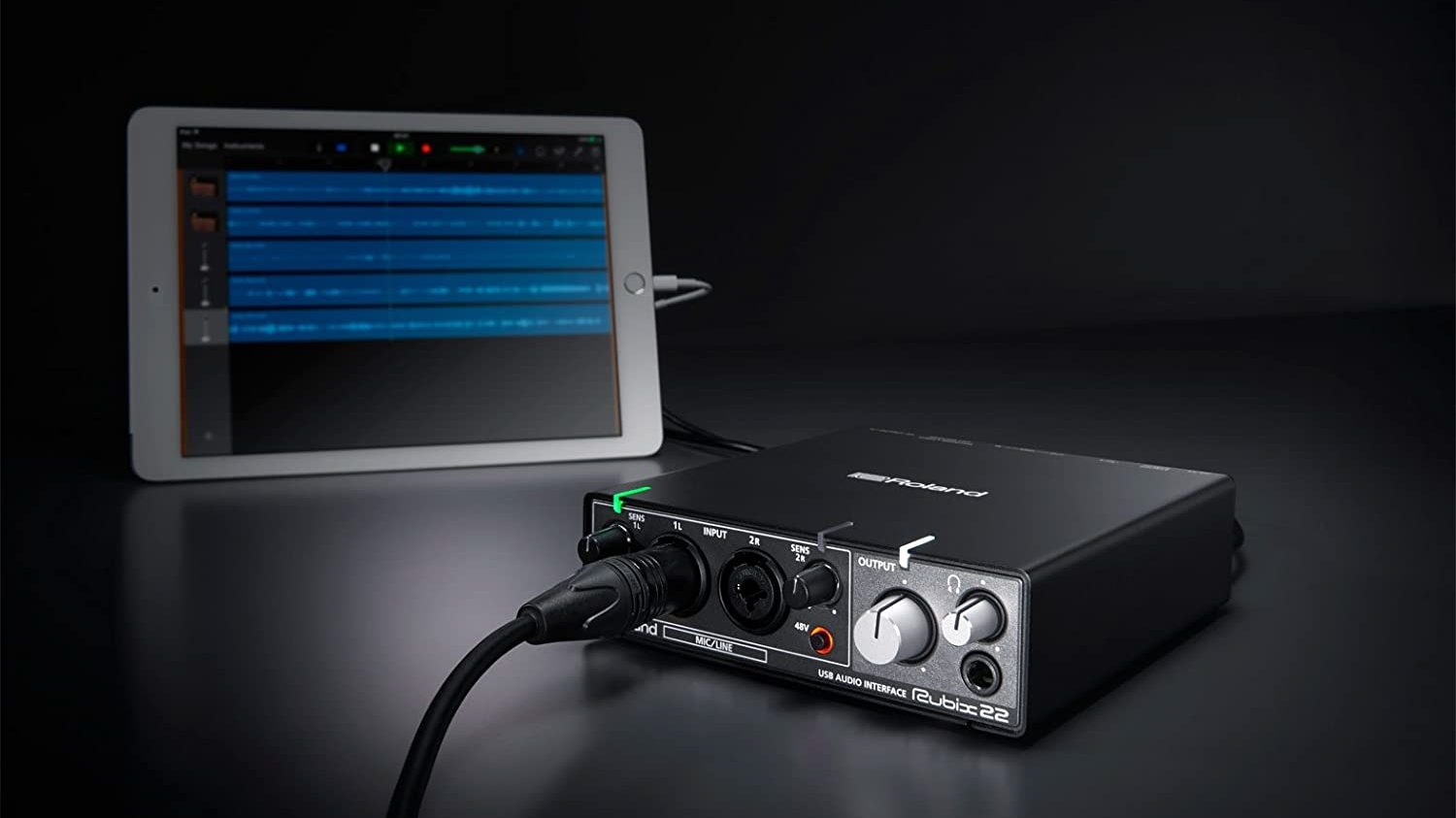Home>Production & Technology>Audio Interface>What To Look For When Buying Audio Interface
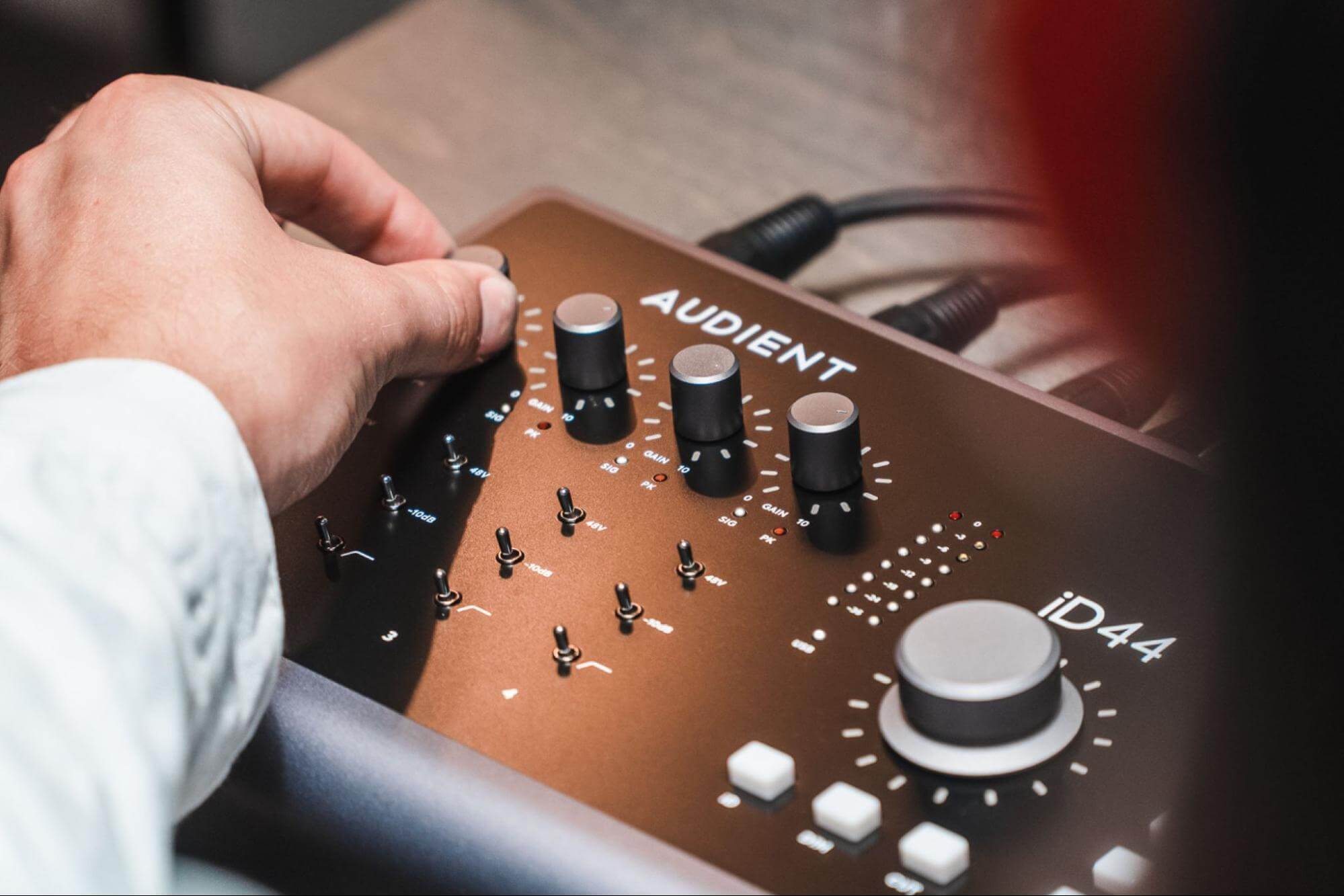

Audio Interface
What To Look For When Buying Audio Interface
Modified: February 19, 2024
Looking to buy an audio interface? Find out what features to consider and make an informed decision. Explore our guide for reliable audio interface recommendations and expert tips.
(Many of the links in this article redirect to a specific reviewed product. Your purchase of these products through affiliate links helps to generate commission for AudioLover.com, at no extra cost. Learn more)
Table of Contents
Introduction
An audio interface is a crucial component for anyone looking to record, mix, or produce music or other audio content. It serves as the bridge between your computer and the outside world, converting analog signals into digital data that can be processed and manipulated.
Whether you are a professional musician, a podcast enthusiast, or a budding producer, investing in a high-quality audio interface can significantly enhance the quality of your recordings. With the wide range of options available in the market, it is important to understand what to look for when buying an audio interface to ensure it meets your specific needs.
Before delving into the specifics, it is essential to consider the purpose and scope of your usage. Are you a solo artist or part of a band? Do you primarily record vocals or instruments? Are you planning on expanding your setup in the future? Answering these questions will help you determine the necessary features and capabilities of your audio interface.
In this article, we will explore the key factors to consider when purchasing an audio interface. From compatibility and inputs/outputs to audio quality and portability, this guide will equip you with the knowledge to make an informed decision. So, let’s dive in and discover what you should be looking for in an audio interface!
Compatibility
When shopping for an audio interface, it’s crucial to ensure that it is compatible with your existing setup and software. Compatibility issues can lead to frustration and wasted time, so it’s important to do your homework before making a purchase.
First, consider the operating system of your computer. Audio interfaces typically support either Windows or macOS, so make sure the interface you choose is compatible with your computer’s OS.
Next, check the connection options available on your computer. Most modern audio interfaces connect via USB, but some may offer other connectivity options like Thunderbolt or FireWire. Ensure that your computer has the necessary ports to accommodate the interface you’re considering.
Furthermore, if you plan on using your audio interface with a mobile device, such as an iPad or smartphone, verify that it supports the necessary connections and protocols, such as USB-C or Lightning.
In addition to hardware compatibility, it’s important to consider software compatibility as well. If you use a specific digital audio workstation (DAW) or recording software, make sure the audio interface is supported by that software. Some interfaces come bundled with software, so check if the included programs align with your needs.
Lastly, keep in mind the number of inputs and outputs you require. If you work with multiple microphones or instruments simultaneously, ensure that the interface has enough inputs to accommodate your needs. Similarly, if you need to connect to external devices like monitors or headphones, make sure the interface has sufficient outputs for your setup.
By ensuring compatibility with your computer, software, and desired audio configuration, you can avoid frustrating technical issues and ensure a seamless integration of your audio interface into your existing setup.
Inputs and Outputs
When considering an audio interface, it’s important to evaluate the available inputs and outputs to ensure they meet your recording and production needs. The number and type of inputs and outputs can vary greatly between different models, so it’s crucial to assess whether they align with your requirements.
Start by considering the type of audio signals you intend to record. Most audio interfaces offer XLR inputs for connecting microphones, as well as 1/4-inch inputs for instruments such as guitars and keyboards. Ensure that the interface has an adequate number of inputs to accommodate the sources you plan to record simultaneously.
In addition to the number of inputs, pay attention to the preamp quality. Preamps are responsible for amplifying the input signals, and a higher-quality preamp can significantly improve the sound quality. Look for interfaces that have transparent and low-noise preamps to capture your recordings with precision and clarity.
On the output side, consider the options for connecting your speakers or headphones. Most audio interfaces offer 1/4-inch or XLR outputs for connecting studio monitors, as well as a dedicated headphone output. Make sure that the interface provides enough outputs to connect your preferred monitoring setup.
It’s also worth noting the availability of additional outputs, such as digital outputs or MIDI ports. Digital outputs can be useful for connecting external gear or sending a digital signal to another device, while MIDI ports allow you to connect MIDI keyboards or controllers for music production.
Lastly, if you plan on using outboard gear, such as hardware compressors or equalizers, check if the interface has insert points. Insert points enable you to route the signal through external processors and back into the interface, giving you more flexibility in your signal chain.
By considering the inputs and outputs offered by an audio interface, you can ensure that it aligns with the number and type of sources you plan to record, as well as the connectivity options you require for your monitoring and production setup.
Audio Quality
When it comes to audio interfaces, the quality of the audio conversion is of utmost importance. The audio interface acts as the gateway for turning analog signals into digital data, and the quality of this conversion can have a significant impact on the overall sound of your recordings.
One crucial aspect to consider is the bit depth and sample rate supported by the audio interface. Bit depth determines the dynamic range and resolution of the audio, while the sample rate determines the frequency range that can be captured. Higher bit depths and sample rates result in more accurate and detailed recordings, providing a greater level of fidelity.
Furthermore, pay close attention to the signal-to-noise ratio (SNR) of the audio interface. SNR measures the level of noise compared to the desired signal and is expressed in decibels (dB). A higher SNR indicates a cleaner and more accurate audio signal.
The quality of the preamps also plays a crucial role in the audio capture process. Look for interfaces that boast transparent and low-noise preamps to ensure that your recordings are free from unwanted noise or distortion.
It’s worth mentioning that audio quality is not solely determined by the audio interface but is also influenced by the quality of the microphones, instruments, and speakers used in your setup. However, investing in an audio interface that prioritizes audio quality will contribute to better recordings and more accurate monitoring.
If possible, listen to comparisons and reviews of different audio interfaces to get a sense of their sound quality. Online forums, audio communities, and gear reviews can provide valuable insights into the performance and audio quality of various models.
Remember, the goal is to capture your audio sources with clarity, accuracy, and minimal distortion. By prioritizing audio quality in your audio interface selection, you can ensure that your recordings and final mixes sound professional and true to the original source material.
Connection Type
The connection type of an audio interface refers to the method it uses to communicate with your computer or other devices. The connection type plays a role in the speed and stability of data transfer, as well as the compatibility with different operating systems and devices.
The most common connection type for audio interfaces is USB. USB interfaces are widely supported by both Windows and macOS systems and offer a good balance of speed and convenience. USB 2.0 and USB 3.0 are common standards for audio interfaces, with USB 3.0 providing faster data transfer rates.
If you require even faster data transfer speeds, you can consider audio interfaces with Thunderbolt or FireWire connections. Thunderbolt interfaces offer extremely fast data transfer rates and are ideal for professional studios or high-demand recording setups. However, they may require a compatible Thunderbolt port on your computer.
Another connection type to consider is Ethernet or AVB (Audio Video Bridging). These types of interfaces are typically used in networked audio systems, where multiple audio devices are interconnected. Ethernet or AVB interfaces allow for easy expansion and integration of additional audio gear.
It’s important to note that the connection type may also affect the overall latency of the audio interface. Latency refers to the time it takes for the audio signal to travel from your input source to your computer and back out through the output. Lower latency is desirable for real-time monitoring and recording. USB and Thunderbolt connections generally offer low-latency performance, while FireWire and Ethernet may have slightly higher latency.
Before deciding on a connection type, consider the compatibility with your computer and other devices, the transfer speeds you require, and the latency you can tolerate for your specific recording and production needs.
It’s also worth noting that some audio interfaces offer multiple connection options, allowing you to choose the one that best suits your setup. This flexibility can be beneficial if you plan on using your audio interface with different computers or need the option to switch between connection types in the future.
Ultimately, choosing the right connection type for your audio interface ensures seamless communication with your computer or networked audio system, allowing you to focus on creating music or producing content without any technical limitations.
Sample Rate and Bit Depth
Sample rate and bit depth are important specifications to consider when choosing an audio interface. They determine the quality and accuracy of the audio recordings and play a significant role in the overall fidelity of your final mixes.
Sample rate refers to the number of samples taken per second when converting analog audio into digital data. The most common sample rates are 44.1 kHz (used for CD-quality audio) and 48 kHz (used for broadcast and video production). Higher sample rates, such as 96 kHz or 192 kHz, are available on some interfaces and are often preferred by professional audio engineers for capturing more detail and nuance in the recordings. It’s important to note that higher sample rates also result in larger file sizes and increased demands on your computer’s processing power.
Bit depth represents the number of bits used to represent the amplitude of each sample. Common bit depths include 16-bit, 24-bit, and 32-bit. A higher bit depth allows for a larger dynamic range and more accurate representation of the audio signal. Most audio professionals recommend using a bit depth of at least 24-bit, as it provides ample headroom for recording and editing without introducing noticeable artifacts.
When choosing an audio interface, look for one that supports the sample rate and bit depth you prefer for your recordings. It’s important to consider the requirements of your projects and the capabilities of your computer and software. While higher sample rates and bit depths can potentially result in better sound quality, be mindful of the storage and processing demands they entail.
Additionally, keep in mind that the sample rate and bit depth of your audio interface should match the settings in your recording software to ensure accurate and seamless recording sessions. Setting mismatched sample rates or bit depths can lead to sample rate conversion issues or unnecessary signal degradation.
Ultimately, the sample rate and bit depth capabilities of your audio interface should align with your recording and production needs. By selecting an interface that supports the desired sample rates and bit depths, you can capture your audio with precision and maintain the highest level of quality throughout your production process.
Software Integration
Software integration is an important factor to consider when choosing an audio interface. The level of compatibility and integration between the interface and your recording software can greatly impact your workflow and productivity.
First and foremost, ensure that your chosen audio interface is compatible with your preferred digital audio workstation (DAW) or recording software. Most reputable audio interface manufacturers provide drivers and software that are compatible with popular DAWs, such as Ableton Live, Pro Tools, Logic Pro, Cubase, and Studio One. Make sure to check the manufacturer’s website or product documentation for information on software compatibility.
Some audio interfaces come bundled with specialized software packages, such as virtual instruments, effects plugins, or digital signal processing tools. These bundled software can add value to your purchase, especially if they align with your production needs. Consider the usefulness and quality of the included software when making your decision.
In addition to compatibility, look for audio interfaces that offer seamless integration with your recording software. This includes features like direct monitoring, which allows you to listen to your input sources in real-time without latency, as well as software-controlled routing options for flexible signal routing and monitoring configurations. User-friendly control panels and software interfaces also contribute to a smooth and effortless user experience.
Furthermore, consider the level of software customization and control available with the audio interface. Some interfaces provide dedicated control surfaces or software mixers that allow you to adjust input levels, monitor mixes, and manage routing directly from the interface itself. This can be particularly useful for live performances or situations where you need quick access to certain functions without relying solely on your computer.
Lastly, stay updated with software updates and driver support from the manufacturer. Regular software updates can bring performance improvements, bug fixes, and additional features to your audio interface, ensuring that it remains compatible with evolving operating systems and recording software versions.
By selecting an audio interface that offers solid software integration and compatibility with your recording software of choice, you can streamline your workflow, enjoy a more efficient recording and production process, and unlock the full potential of your audio interface and software combination.
Latency
Latency is a critical factor to consider when choosing an audio interface, especially if you require real-time monitoring or rely on software instruments during your recording or production process. Latency refers to the delay between the moment an audio signal is input into the interface and the moment it is played back through the speakers or headphones.
In simple terms, low latency means a shorter delay, which allows for more immediate and responsive monitoring while recording or playing virtual instruments in real-time. High latency can cause noticeable delays and disrupt your workflow, making it challenging to play instruments or sing in sync with the playback.
The amount of latency you can tolerate will depend on your specific needs and workflow. Musicians who rely on playing live instruments or using virtual instruments in real-time will benefit from interfaces with very low latency, whereas producers who primarily work with pre-recorded tracks may have more flexibility in this regard.
Several factors contribute to the latency of an audio interface, including the interface’s hardware design, driver optimization, and the performance of your computer. To achieve low-latency performance, look for interfaces that offer dedicated low-latency modes or technologies, such as ASIO (Audio Stream Input/Output) for Windows or Core Audio for macOS.
Processing power and buffer settings also affect latency. Lower buffer sizes reduce latency but can put a heavier load on your computer’s CPU, potentially leading to audio dropouts or glitches. Finding the right balance between buffer size and acceptable latency is key for optimal performance.
It’s important to note that latency can vary depending on the software you’re using, as different audio plugins and effects may introduce additional processing delays. As such, it’s recommended to test an audio interface’s latency performance in the specific recording or production environment and software you plan to use.
Lastly, consider the monitoring options offered by the audio interface. Some interfaces feature direct monitoring, which bypasses the computer’s processing and allows you to monitor the input signals directly. This can significantly reduce latency and provide a near-real-time monitoring experience.
By selecting an audio interface with low latency performance and tailored monitoring options, you can ensure a smooth and efficient recording and production experience, with minimal delay between your actions and the resulting audio feedback.
Portability
The portability of an audio interface is an important consideration for those who need to take their recording setup on the go or work in different locations. Whether you’re a traveling musician, a podcaster on the move, or simply enjoy recording outside of your home studio, a portable audio interface can offer convenience and flexibility.
When evaluating the portability of an audio interface, consider its size, weight, and overall durability. A compact and lightweight interface is easily transportable, fitting into a backpack or gear bag without adding significant bulk. Look for interfaces that are designed for travel and feature a rugged build, ensuring they can withstand the rigors of being transported frequently.
Another aspect to consider is the power source of the interface. Some interfaces are bus-powered, meaning they draw power directly from the USB or Thunderbolt connection, eliminating the need for an external power source. This is an advantage for portable setups, as you won’t have to worry about carrying additional power adapters or finding available power outlets. However, keep in mind that bus-powered interfaces may have limitations on the number of inputs or require sufficient power from the connected device.
Connectivity options also play a role in the portability of an audio interface. Interfaces with USB or Thunderbolt connections are highly portable, as they can be easily connected to laptops or audio devices without the need for additional adapters or specialized cables. However, if you plan on using your interface with mobile devices, verify that it supports the necessary connections, such as USB-C or Lightning.
Some portable audio interfaces come with additional features like built-in microphones, headphone outputs, or battery-powered operation, further enhancing their versatility and portability. These features can be particularly useful for on-the-go recording or situations where you need a compact setup without compromising on essential functionality.
Lastly, consider the software compatibility and ease of setup and configuration. Portable interfaces should be straightforward to connect and configure, ensuring a hassle-free experience wherever you go. Look for interfaces that offer intuitive control panels or software interfaces, allowing you to quickly adjust settings and get up and running with minimal effort.
By choosing a portable audio interface that meets your specific needs, you can enjoy the flexibility to record and produce music or audio content wherever inspiration strikes, without sacrificing quality or functionality.
Price Range
Price is a crucial factor to consider when purchasing an audio interface. The cost of audio interfaces can vary significantly depending on the features, quality, and brand reputation. Setting a budget and understanding your requirements will help you find the right balance between affordability and the necessary features for your recording and production needs.
Entry-level audio interfaces typically range from around $50 to $200. These interfaces offer basic functionality with a limited number of inputs and outputs, lower-quality preamps, and possibly fewer features. They can still provide decent sound quality for beginners or those on a tight budget.
Mid-range audio interfaces usually fall in the $200 to $500 price range. They offer a balance between affordability and higher-quality components, including improved preamps, more inputs and outputs, and additional features like digital connectivity options. These interfaces are suitable for intermediate musicians, podcasters, and home studio owners who require more versatility and better sound quality.
High-end audio interfaces, priced at $500 and above, offer top-tier audio conversion, professional-grade preamps, numerous inputs and outputs, and advanced features. They are designed for professional studios and audio enthusiasts who require the highest level of audio fidelity and reliability. These interfaces often come with additional software and hardware integrations, making them a comprehensive solution for demanding recording and production workflows.
It’s worth noting that while higher-priced interfaces generally offer better sound quality and more advanced features, they may not always be necessary for everyone. It’s important to assess your specific needs and select an interface that matches your requirements and budget. Consider the number of inputs and outputs you need, the quality of preamps desired, and the compatibility with your recording software.
Additionally, keep an eye out for sales, promotions, and used equipment in order to find audio interfaces at more affordable prices. Many music gear retailers offer bundles or discounted pricing during holidays and special events.
Remember, the most important aspect is to choose an audio interface that meets your specific needs and delivers the desired level of performance within your budget.
Conclusion
Choosing the right audio interface is a crucial decision that can greatly impact the quality of your recordings and overall production workflow. By considering the factors discussed in this article, you can make an informed decision that aligns with your specific needs and budget.
Compatibility with your computer and software, as well as the number and type of inputs and outputs, should be carefully evaluated to ensure seamless integration and functionality. Paying attention to audio quality, including sample rate, bit depth, and the quality of the preamps, will result in more accurate and detailed recordings.
Consider the connection type of the audio interface to ensure compatibility with your devices and the desired level of data transfer speed. Portability may be a crucial factor if you need to work on the go or in different locations, so choose an interface that is compact, lightweight, and durable.
Don’t forget to assess the latency performance of the audio interface, especially if you require real-time monitoring or use software instruments. Additionally, take into account the level of software integration, including compatibility with your preferred DAW and ease of use.
Finally, establish a budget and consider the price range that suits your needs. Whether you are just starting out or have professional aspirations, there are audio interfaces available to match your requirements at various price points.
Remember, the right audio interface is the one that meets your specific needs and enables you to capture and create with the highest level of quality and convenience. By considering these factors and taking the time to research and compare different models, you can find the perfect audio interface that elevates your recordings and helps you achieve your creative goals.

